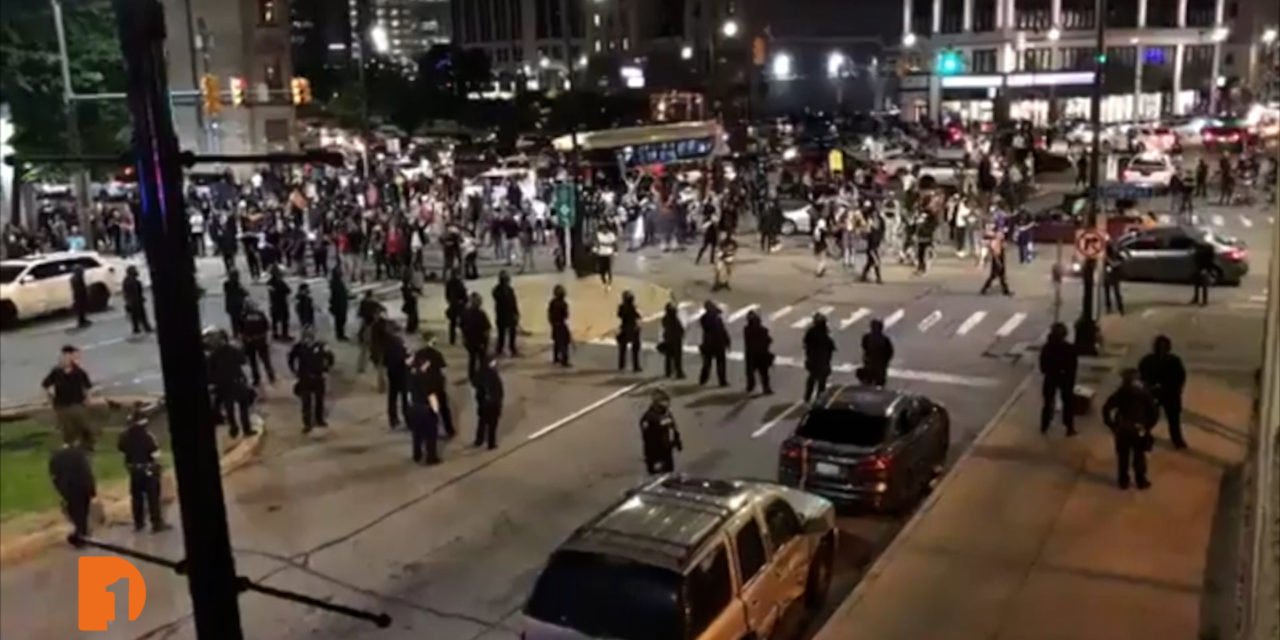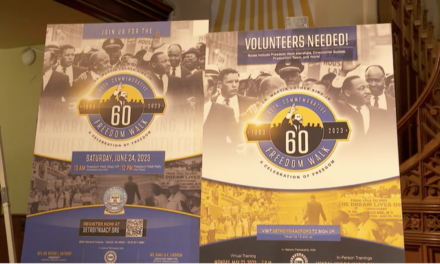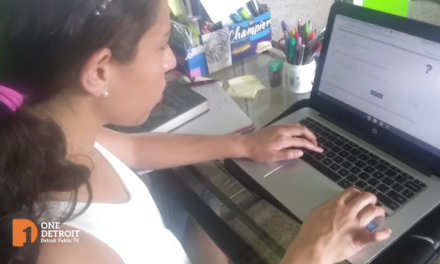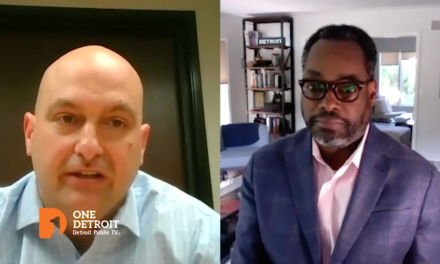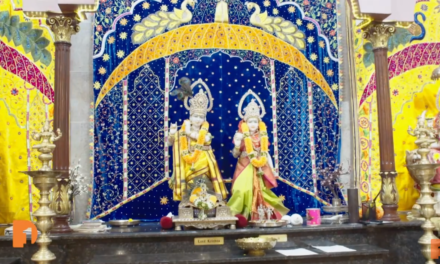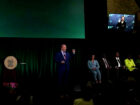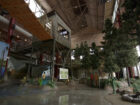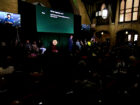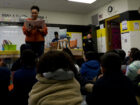When national protests and outrage over the death of George Floyd began to seep into the streets of downtown Detroit, Detroit Free Press photojournalist Mandi Wright was there with her iPhone camera and a gas mask to capture it all. But that’s not always the way it’s been. How has protest coverage changed from Wright since she began as a staff photographer at the Detroit Free Press in 2000?
One Detroit’s Bill Kubota catches up with Wright to hear how she believes her role has transformed over the past two decades, what it was like to cover 5 days of combative protests throughout Detroit and the importance of photojournalists being at the scene to tell the story accurately and objectively.
Watch Now:
Full Transcript:
Mandi Wright, Photographer, Detroit Free Press: I’m Mandi Wright, I’m live right now, right next to the Marriott. Police are in riot gear pushing protesters back.
Bill Kubota, One Detroit: Photographer Mandi Wright has been with the Detroit Free Press 20 years. Things have really changed in the way you do your job with the internet and everything like that really taken hold.
Mandi Wright: So when I started, we used film until digital became technically almost perfect, and once we went into digital, then we transformed into a video. And then it was always about feeding the internet. We’re making movies. The Detroit Free Press does documentary films now.
Mandi Wright: Protesters out in the middle of Jefferson Avenue,
Bill Kubota: Some of Wright’s recent online work has gone big.
Speaker 3: You scared?
Bill Kubota: Especially her coverage of unrest in Detroit after the killing of George Floyd in Minneapolis. The first five days of protests brought the free press many millions of views on Facebook. A simple live feed from a cell phone, two, three hours straight that started May 29.
Mandi Wright: It was pretty heated, and then… Fights are broken out.
Debris started to be lobbed from the protesters, whether it was water bottles. There was a lot of energy in the protests. People were very angry about the incident in Minneapolis. Started to turn that rage toward the Detroit police. We’re now being pushed up Randolph. It’s getting pretty violent.
Bill Kubota: And there was a point where somebody got shot and killed during all of this.
Mandi Wright: Right. Yes. When I was up in the parking structure, you can actually hear in my footage, the shooting and I go down to the street level and sure enough…
Speaker 4: And I saw blood on the ground.
Bill Kubota: The victim, not a protester, not harmed by the police, an altercation gunplay and two young men to be charged with the killing. Protest day two would play out like day one. More crowds and police in riot gear minus the homicide. Day three a Sunday came with the curfew.
Mandi Wright: Screaming don’t shoot.
Bill Kubota: But how would it be enforced?
Mandi Wright: The crowd was determined to break the curfew, which was mandated for eight o’clock, and the crowd was really they were not going to move. They were not moving.
The woman approaching the police. All right. We got tear-gassed. And the police started a full-frontal assault to get the protesters out into the street. Protesters throwing things and tear gas is coming right at us.
Bill Kubota: Day four was a day there was a 16-year-old kid that rallied the troops to disperse.
Mandi Wright: Yeah, Stefan Perez, the 16-year-old kid from Southwest Detroit, really wanted the group that they were marching with to disperse by curfew.
Stefan Perez, Protest Leader: This band.
Mandi Wright: He managed to successfully get and I thought that might be a turning point in terms of how the protests would be handled from that point forward.
Mandi Wright: Right now, the police are just standing down.
Stefan Perez: And they home safe. They don’t got rubber bullets, they don’t got tear gas, they’re not dead. That’s all that matters right now.
Mandi Wright: And it was just an endearing moment while we’re interviewing him. Mayor Duggan calls him on the telephone and congratulates him on the diplomacy in which he handled the marchers.
Mayor Duggan: I was watching the video and I saw your leadership. I have tears in my eyes. You are everything that’s special about the city of Detroit.
Mandi Wright: All right. We’re told to step back.
Bill Kubota: Day five, Tuesday, June 2nd on the East Side Gratiot Avenue. And it’s getting past eight o’clock.
Mandi Wright: We were close. We’re trying to cover it. That’s our jobs and police grab me. But I was lucky I was let go. After Gratiot, protesters were still determined to defy curfew, but the Detroit police and the mayor’s office decided to make curfew discretionary, which I think was a, you know, a very successful tactic in allowing people to voice peacefully their First Amendment right.
Bill Kubota: Last thing I think about this, you’re covering it really important stuff with an iPhone. Anybody could do what you were doing, but really, honestly, I don’t think that’s the case.
Mandi Wright: Could they? Could they?
Mandi Wright: I don’t know. I think that I’m a trained journalist, and I think that makes a big difference. I don’t take a side. I try to report as objectively as possible. And I think that was part and parcel of why people came to the Free Press because they didn’t have to be spoon-fed an opinion. That’s not what I was there to do. I was there to tell what I was seeing and be the eyes for, you know, anybody who wanted to watch it.
Subscribe to One Detroit’s YouTube Channel & Don’t miss One Detroit Mondays and Thursdays at 7:30 p.m. on Detroit Public TV, WTVS-Channel 56.
Catch the daily conversations on our website, Facebook, Twitter @DPTVOneDetroit, and Instagram @One.Detroit
View Past Episodes >
Watch One Detroit every Monday and Thursday at 7:30 p.m. ET on Detroit Public TV on Detroit Public TV, WTVS-Channel 56.

